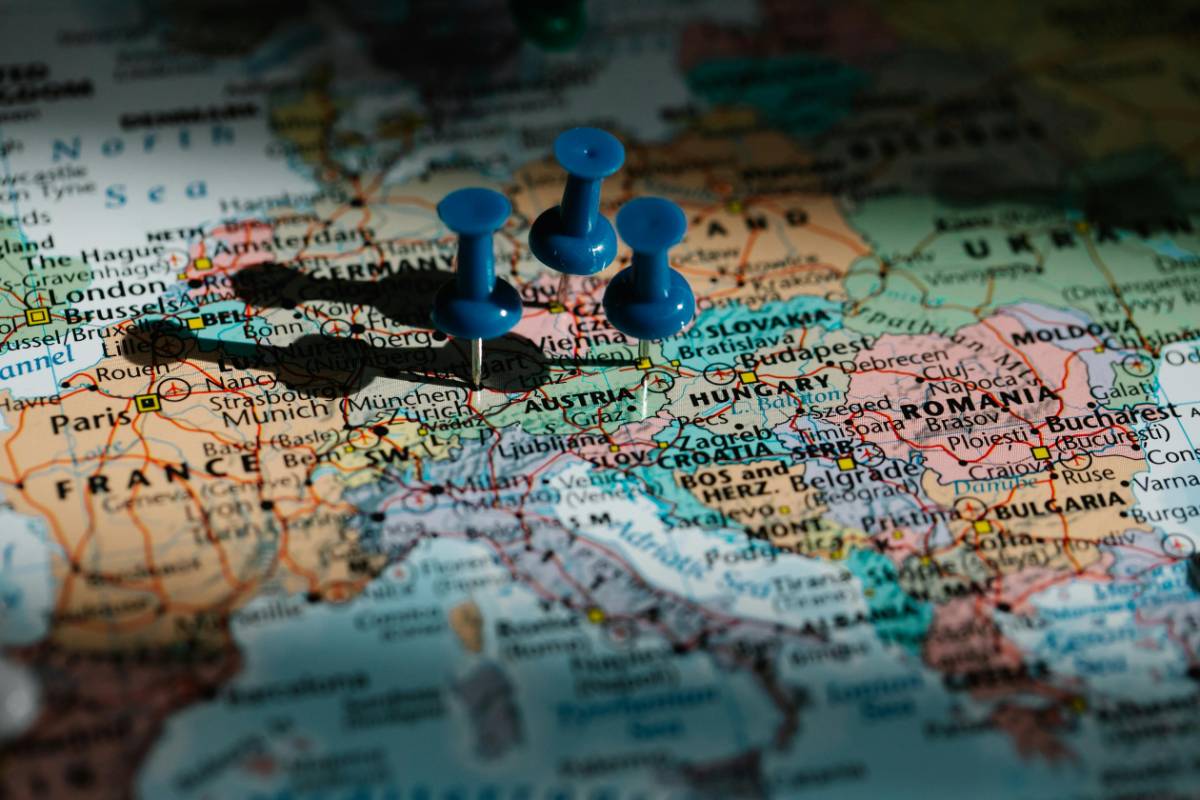
Planning a multi-country vacation is an exciting adventure that allows you to explore diverse cultures, landscapes, and attractions. However, with so many details to organize, it can also be a bit overwhelming. From choosing the right destinations to managing logistics, here are some tips to help you plan a seamless and unforgettable multi-country trip.1174a.jpg***Step 1: Choose Your Destinations WiselyThe first step in planning a multi-country vacation is selecting the destinations you want to visit. Consider regions that are geographically close to each other to minimize travel time and costs between countries. For example, traveling through Western Europe, Southeast Asia, or Central America can be more efficient than hopping between distant continents.It’s also essential to think about the type of experience you want. Are you looking to explore cities, relax on beaches, or immerse yourself in nature? Make sure your destinations offer a variety of activities that suit your interests and needs.***Step 2: Research Travel Restrictions and VisasBefore you start booking flights and accommodations, check the visa requirements and travel restrictions for each country you plan to visit. Many countries have specific visa policies, and some may require you to obtain a visa in advance, while others may offer visa-on-arrival services.Also, stay updated on any COVID-19 regulations, including quarantine requirements or vaccine documentation. Knowing this information in advance will help you avoid unexpected complications during your trip.***Step 3: Plan Your Route and TransportationOnce you’ve narrowed down your destinations and taken care of visa requirements, it’s time to plan your route. Think about how you’ll get from one country to another and the most efficient transportation options available.Flying between major cities is often the quickest and most convenient option. Look for budget airlines or travel passes that allow you to visit multiple cities at a discounted rate. Alternatively, train and bus services may be more scenic and affordable options, especially in regions like Europe and Southeast Asia.***Step 4: Create a Realistic ItineraryWith multiple countries to visit, it’s crucial to create a balanced and realistic itinerary. Don’t over-pack your schedule by trying to see everything at once. Instead, prioritize your must-see attractions and leave room for spontaneity.Be sure to factor in travel time between destinations. Some countries are larger than others, and you may spend several hours on a train or plane just getting from one place to another. Leave at least one full day in each city to explore before moving on to the next destination.***Step 5: Budget for the TripA multi-country vacation can be expensive, so it’s essential to budget for the entire trip. Start by estimating how much you’ll need for flights, accommodation, meals, and activities in each country. Don’t forget to factor in the cost of transportation between countries and any entry fees for museums, parks, or attractions.Consider using budgeting apps or spreadsheets to track your spending throughout the trip. You can also save money by staying in hostels, booking tours in advance, or choosing destinations with a lower cost of living.***Step 6: Pack Light and SmartPacking for a multi-country trip can be tricky, as you’ll need to prepare for a variety of climates and activities. The key is to pack light and versatile items that can be mixed and matched for different occasions.Pack clothing that can be layered, as temperatures can vary from one country to another. Comfortable shoes are a must, especially if you plan to do a lot of walking. Don’t forget travel-sized toiletries, a portable charger, and a daypack for sightseeing.1174b.jpg***Step 7: Stay Connected and Plan for CommunicationStaying connected while traveling through multiple countries can be a challenge. Look into purchasing a global SIM card or an international roaming plan that allows you to use your phone in several countries without incurring hefty fees.Alternatively, consider relying on Wi-Fi for communication. Many cafes, hotels, and public spaces offer free Wi-Fi, so you can use messaging apps or make calls through Wi-Fi networks. It’s also helpful to download offline maps and translation apps to navigate unfamiliar places.***Step 8: Learn the Basics of Local LanguagesWhile English is widely spoken in many countries, it’s always a good idea to learn a few key phrases in the local language. Simple greetings, thank you, and please can go a long way in making connections and showing respect for the local culture.Before you go, consider downloading language apps like Duolingo or Google Translate to help you with translations during your trip. Knowing a little of the local language will also enrich your experience and make your trip more enjoyable.***Step 9: Be Flexible and Embrace the UnexpectedOne of the most important tips for a multi-country vacation is to remain flexible. While it’s great to have an itinerary, things can change unexpectedly, whether it’s due to weather, transportation delays, or changes in local regulations.Embrace the unexpected and be open to spontaneous adventures. Some of the best travel memories come from unplanned moments, like discovering a hidden gem or meeting new people along the way.***Step 10: Stay Safe and Keep Important Documents SecureWhen traveling through multiple countries, it’s essential to prioritize your safety and keep important documents secure. Keep copies of your passport, visa, and other crucial documents in a separate location from the originals.Consider investing in a travel money belt or neck pouch to keep your passport and credit cards safe from pickpockets. Additionally, research the safety tips and guidelines for each country you’re visiting and stay informed about any potential risks.***Step 11: Enjoy the JourneyFinally, remember that travel is about enjoying the experience and embracing the journey. Take time to enjoy the sights, meet locals, and immerse yourself in the cultures you encounter. Don’t rush from one destination to the next, and make sure to savor every moment of your multi-country vacation.By following these tips and planning ahead, you can ensure a smoother and more enjoyable experience as you explore multiple countries. Whether it’s your first multi-country trip or your 10th, thoughtful preparation will help you create lasting memories and make the most of your adventure.
By Abraham Benjamin · 18 Aug 2025

Travel photography allows you to capture the essence of a destination, preserve memories, and share unique perspectives. Whether you’re an amateur or an experienced photographer, learning how to capture stunning travel photos can make your journey even more memorable. This guide provides tips and tricks to help you take breathtaking travel photos.1173a.jpg***Step 1: Choose the Right GearWhile smartphones have advanced cameras, investing in a good quality DSLR or mirrorless camera can elevate your travel photography. A versatile lens, such as a 24-70mm zoom lens, will allow you to capture wide landscapes and close-up shots with ease.In addition to the camera, make sure to carry extra memory cards, batteries, and a tripod for stability. If you’re traveling to remote locations, a lightweight camera bag that’s easy to carry is essential.***Step 2: Understand Lighting and Golden HoursThe best travel photos are often captured during the golden hours—shortly after sunrise and just before sunset. The soft, warm light creates a magical atmosphere and enhances the colors in your shots.Avoid shooting in harsh midday sunlight, which can create unflattering shadows and overexposed highlights. If you must shoot at midday, look for shaded areas or use the backlighting technique to create interesting silhouettes.***Step 3: Use the Rule of ThirdsOne of the simplest yet most effective composition techniques is the rule of thirds. Imagine dividing your image into a 3x3 grid, and position the key elements of your photo along the lines or at their intersections.For example, when photographing a landscape, place the horizon on the top or bottom third of the image rather than in the center. This adds balance and creates a more dynamic composition.***Step 4: Capture Local Life and CultureWhile landscapes are beautiful, some of the most stunning travel photos come from capturing local life and culture. Street markets, festivals, and everyday activities can tell compelling stories about a destination.Take the time to observe and interact with locals. Don’t hesitate to ask if you can photograph them, but always be respectful and considerate. Capturing candid moments adds authenticity to your travel photos.***Step 5: Experiment with Different PerspectivesA common mistake in travel photography is to shoot everything from eye level. While that’s often the most straightforward perspective, experimenting with different angles can add depth and interest to your photos.Try shooting from a low angle to make a subject appear grand and powerful, or capture a scene from a bird’s-eye view for a unique perspective. Climbing to higher ground or shooting through a frame can also create more visually striking images.***Step 6: Focus on DetailsNot every great photo needs to capture an entire scene. Focus on the small details that often get overlooked, such as textures, patterns, or the way light interacts with an object. These close-up shots can be just as stunning as wide vistas and help to tell a fuller story of your travels.When photographing architecture, for example, zoom in on intricate carvings or the play of light and shadow on a building’s surface. Small, intimate shots bring a unique perspective to your travel photo collection.1173b.jpg***Step 7: Use Natural FramingFraming is a powerful tool in photography that can help draw attention to the subject of your image. Look for natural frames in the environment, such as doorways, windows, archways, or tree branches.Positioning your subject within these frames creates a sense of depth and makes your image feel more immersive. Natural framing also adds an artistic touch to your photos and emphasizes the main subject.***Step 8: Play with ReflectionsReflections add an extra layer of intrigue to photos. Whether it’s the reflection of a building on a glass surface, a lake, or a puddle, the mirrored effect creates a visually interesting symmetry.When photographing reflections, make sure to align your shot properly so that the reflection is clear and not distorted. Additionally, play with the symmetry between the reflected and original images for added impact.***Step 9: Tell a Story with Your PhotosThe most captivating travel photos are the ones that tell a story. Instead of just capturing a beautiful scene, try to convey an emotion or narrative with your images.Consider how the lighting, composition, and subject matter can evoke a sense of wonder, adventure, or peacefulness. Think about how each shot fits into the bigger picture of your travels, and capture moments that highlight the journey rather than just the destination.***Step 10: Edit Your Photos ThoughtfullyEditing is an essential part of the photography process, but it’s important to do so in moderation. Enhance the natural beauty of your photos by adjusting exposure, contrast, and colors, but avoid over-editing to the point where the image looks unrealistic.Use editing software such as Lightroom or Snapseed to refine your shots. Simple edits like increasing sharpness, adjusting white balance, or adding a slight vignette can make your photos pop without altering their authenticity.***Step 11: Practice Patience and Be PreparedSome of the best travel photos require a little patience. Waiting for the right moment—whether it’s a passing cloud, a changing light, or the perfect person walking into the frame—can make all the difference in capturing a stunning shot.Make sure you’re always ready to shoot, keeping your camera accessible and prepared for action. The best photos often happen unexpectedly, so being patient and observant can help you capture that magical moment.Travel photography is about more than just snapping pictures; it’s about capturing the essence of a place, its people, and its culture. By following these tips and practicing your skills, you’ll be able to create a stunning portfolio of travel memories that tell the story of your adventures in a way that’s uniquely yours.
By Christopher David Wilson · 17 Aug 2025

When traveling abroad, understanding and respecting local cultural norms is crucial for building positive relationships and avoiding misunderstandings. Every country has its own set of etiquette rules, from greeting customs to dining manners. Familiarizing yourself with these practices can enhance your travel experience and show respect for the culture you’re visiting.1172a.jpg***Step 1: Research Local GreetingsOne of the first things you'll encounter when arriving in a new country is the local greeting. Handshakes, hugs, bows, or even cheek kisses may be the norm, but the way greetings are performed varies widely across cultures.In some countries, such as Japan, bowing is a traditional form of greeting, while in many Western cultures, a firm handshake is the standard. In the Middle East, greetings may include a kiss on both cheeks or a warm hug between close friends. Understanding these customs can help you avoid any awkwardness when meeting new people.***Step 2: Dress Appropriately for the CultureDress codes vary significantly from one country to another, and what's considered appropriate attire in your home country may not be suitable in another. Many cultures have more conservative dress codes, particularly in religious or rural areas.For example, in some Middle Eastern and Asian countries, it’s important to dress modestly, especially when visiting religious sites. In contrast, beach destinations might encourage more casual or relaxed clothing. Always research the dress code for the country you're visiting and pack accordingly to ensure you're respectful of local customs.***Step 3: Understand Table Manners and Dining EtiquetteDining etiquette is one of the most important aspects of cultural etiquette. While a meal in one country may involve formal seating arrangements and specific utensils, in another, it might be a more relaxed, communal experience.In some cultures, like in parts of Asia, it’s common to eat with chopsticks, and there are specific rules on how to use them, such as not sticking them upright in a bowl of rice. In the Middle East, sharing food from a communal plate is common, and in countries like Italy, it’s considered rude to order pasta with cream-based sauces after a certain time of day.***Step 4: Respect Local Religious PracticesReligion plays a central role in many cultures, and understanding local religious practices is important for demonstrating respect. In some countries, it’s crucial to dress modestly when visiting places of worship or to remove your shoes before entering certain areas, like temples or mosques.In predominantly Muslim countries, it’s important to be mindful of prayer times and fasting during Ramadan, when eating or drinking in public during daylight hours may be frowned upon. Always take the time to understand religious observances and be respectful during your travels.1172b.jpg***Step 5: Tipping PracticesTipping customs vary from one country to another. In the United States, tipping is common and expected, but in many European countries, a service charge is often already included in the bill, making tipping optional. In some Asian countries, like Japan, tipping is not a common practice and may even be seen as disrespectful.Before traveling, research the tipping customs in the country you’re visiting. This will help you avoid offending anyone or appearing disrespectful due to cultural differences. Understanding whether or not to tip, and how much, can enhance your experience and show appreciation for the services you receive.***Step 6: Be Mindful of Personal Space and Physical ContactDifferent cultures have different views on personal space and physical contact. In many Western countries, people value personal space and may not be comfortable with close physical contact from strangers. In contrast, cultures in the Mediterranean or Latin America may have a more relaxed view of personal space, and close physical proximity during conversations is more common.It’s important to observe how locals interact with one another and adapt accordingly. While it’s always important to respect boundaries, understanding cultural norms can help you engage more comfortably in social situations.***Step 7: Learn Key Phrases in the Local LanguageAlthough English is widely spoken in many countries, learning a few key phrases in the local language can go a long way in making a positive impression. Simple phrases like "hello," "please," "thank you," and "excuse me" can help break the ice and show that you appreciate the local culture.Learning a few words in the local language demonstrates respect and shows that you’ve made an effort to connect with the people and culture of the country you’re visiting. Locals often appreciate when travelers make the effort, even if it’s just a few basic phrases.***Step 8: Be Aware of Cultural Taboo SubjectsEvery culture has its taboos—subjects or actions that are considered offensive or inappropriate. These can vary widely, so it’s important to do your research before traveling. For example, discussing politics or religion may be a sensitive topic in certain cultures, and making jokes about the monarchy or national symbols can be considered highly disrespectful in others.When traveling, be mindful of these taboos and avoid bringing up potentially offensive subjects unless you are familiar with the cultural context. This helps avoid misunderstandings and ensures that you maintain a respectful attitude throughout your travels.***Step 9: Observe Local Customs and TraditionsIn every country, there are customs and traditions that play an important role in the daily lives of locals. Whether it’s a specific holiday, ritual, or social expectation, take time to learn about these practices and participate when appropriate. Showing genuine interest in local traditions can enhance your experience and demonstrate respect for the culture.Traveling abroad provides an opportunity to immerse yourself in a culture that may be very different from your own. By understanding and respecting local cultural norms, you not only enrich your travel experience but also foster goodwill and create meaningful connections with people you meet along the way.
By Robert Anthony Brown · 16 Aug 2025
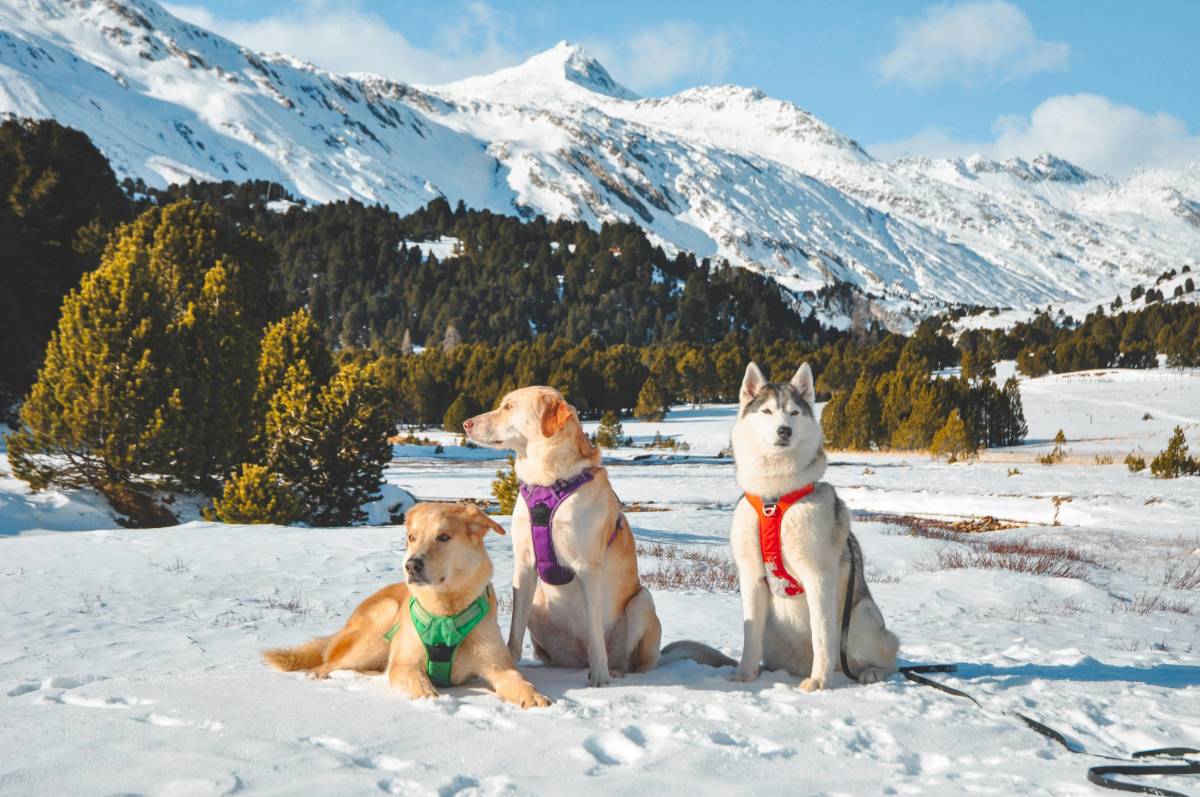
Traveling with pets can be an incredibly rewarding experience, but it requires proper planning and preparation to ensure a smooth and safe journey for both you and your furry companion. Whether you're taking a road trip or flying across the country, there are key steps to follow to make traveling with pets enjoyable for everyone involved.1171a.jpg***Step 1: Prepare Your Pet for TravelBefore embarking on your journey, make sure your pet is ready for the experience. If your pet isn't used to traveling, start by taking them on short trips to get them accustomed to the car or carrier. This will help reduce stress and anxiety when it's time for the longer journey.For pets that are flying, check with your airline to understand their pet travel policies. Ensure your pet's carrier meets the airline's size requirements and that your pet is comfortable in it. You can also take your pet for visits to the vet to ensure they are in good health and up to date on vaccinations.***Step 2: Pack the Essentials for Your PetJust like you need to pack your own essentials for travel, your pet will need their own items for the journey. This includes food, water, medications, and any comfort items like toys, blankets, or a favorite bed. Packing familiar items can help your pet feel more at ease while traveling.Make sure to bring a leash, waste bags, grooming supplies, and any other necessities based on your pet's specific needs. If you’re flying, check with your airline for any additional items or requirements they may have for pets in the cabin or cargo hold.***Step 3: Ensure Your Pet's Identification is Up to DateBefore leaving, double-check that your pet's identification is up to date. Make sure they have a collar with an ID tag that includes your contact information, as well as a microchip in case they get lost during travel. Having updated identification is critical to ensure your pet can be safely returned to you if needed.For international travel, research the pet entry requirements for your destination. Many countries require pets to have specific vaccinations, a health certificate, and sometimes a microchip. Be sure to check these details well in advance of your travel date to avoid complications.***Step 4: Plan for Rest Stops and ExerciseIf you’re traveling by car, make sure to plan for frequent rest stops along the way. Pets, especially dogs, need regular bathroom breaks and opportunities to stretch their legs during long journeys. Stop every few hours to let your pet relieve themselves and get some exercise.Even if you're flying, look for pet-friendly layovers where your pet can be walked and exercised. Ensure you’ve arranged for someone to care for your pet during the flight if they are being checked into cargo, or inquire about in-cabin options if traveling with a smaller pet.1171b.jpg***Step 5: Keep Your Pet Hydrated and ComfortableStaying hydrated and comfortable is essential for pets during travel. Make sure you have a water bottle and bowl handy to offer your pet water throughout the journey. Some pets can get motion sickness, so be prepared with any medications your vet may recommend to prevent nausea.For pets traveling by air, be sure their carrier is well-ventilated and that they have enough space to move around. If traveling by car, keep the vehicle at a comfortable temperature and avoid leaving your pet alone in the car, as temperatures can fluctuate drastically.***Step 6: Book Pet-Friendly AccommodationsWhen you reach your destination, it’s important to have pet-friendly accommodations booked. Many hotels, resorts, and rental properties allow pets, but they may have specific policies or fees. Look for accommodations that offer pet amenities, such as designated pet areas, pet-sitting services, or even pet spas.Before booking, confirm with the property that they are pet-friendly and inquire about any restrictions. It's also helpful to research nearby parks or walking trails where you and your pet can enjoy time outdoors.***Step 7: Be Mindful of Your Pet’s Needs While TravelingThroughout the trip, always be mindful of your pet's needs. Pay attention to their behavior, as they may be stressed, anxious, or uncomfortable in new surroundings. Stick to their regular feeding and bathroom schedule as much as possible to reduce anxiety.If you're traveling to a different time zone, try to gradually adjust your pet's routine to the new schedule before leaving. Keep their comfort in mind by providing plenty of love, attention, and reassurance as they adjust to the journey.Traveling with pets can be a delightful experience with the right preparation and attention to detail. By planning ahead and taking the necessary steps to ensure their comfort and safety, you and your pet can enjoy the adventure together, making lasting memories along the way.
By Stefen · 15 Aug 2025
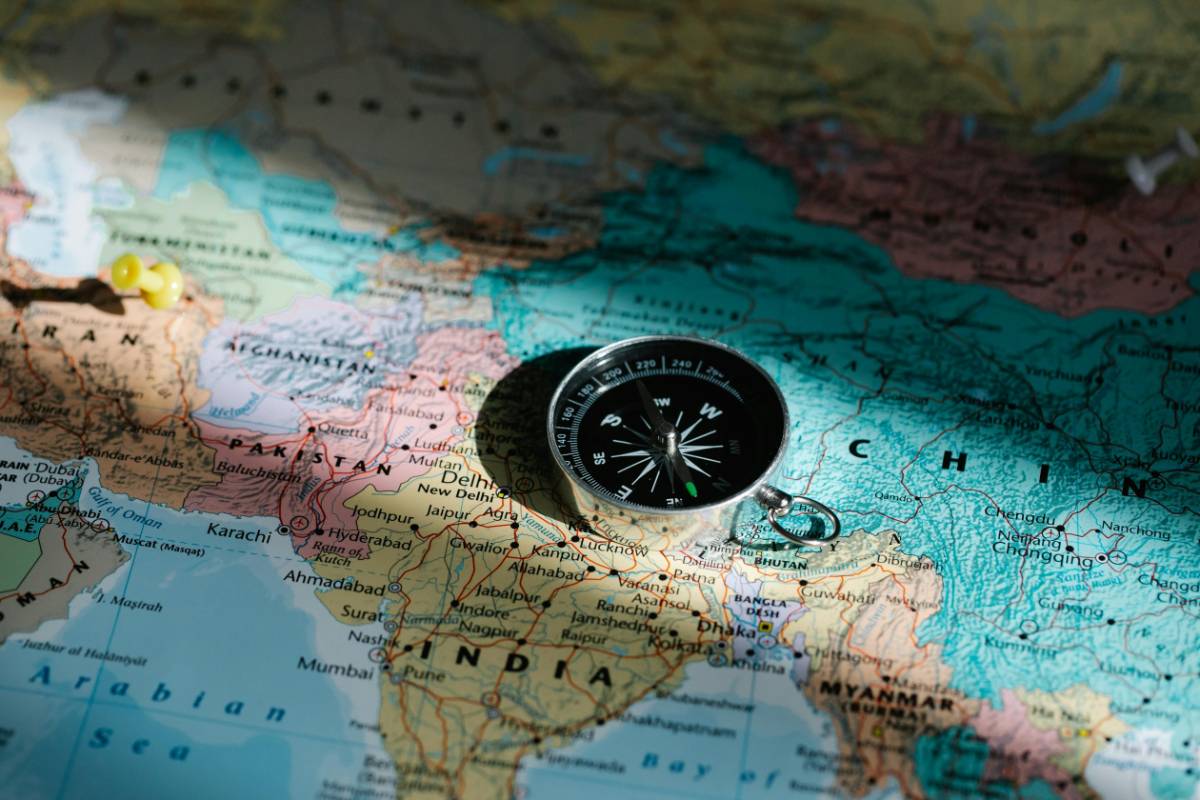
Creating the perfect travel itinerary is a key part of ensuring a smooth, enjoyable trip. Whether you're traveling solo, with friends, or with family, having a well-planned itinerary helps maximize your time and experiences at your destination. A good itinerary should balance sightseeing, relaxation, and flexibility so that you can make the most of your vacation.1170a.jpg***Step 1: Choose Your Destination and DatesThe first step in creating a travel itinerary is to decide where you're going and how long you'll stay. Research the destination thoroughly to get an idea of its top attractions, local culture, and climate. This will help you determine the best time to visit and the ideal duration of your trip.Once you've chosen a destination, decide on the dates of your trip. Factor in the season, weather conditions, and any special events or holidays that might impact your visit. Consider off-season travel to avoid large crowds and potentially lower prices.***Step 2: Research Attractions and ActivitiesNext, make a list of the top attractions and activities you want to experience. Whether it’s visiting historical landmarks, exploring national parks, or trying local cuisine, make sure to prioritize the experiences that are most important to you.Do some research on the must-see places and activities, but also allow room for spontaneity. Not everything needs to be pre-scheduled—leave space for unexpected discoveries or a leisurely afternoon in a local café. This flexibility will help you enjoy your trip without feeling rushed.***Step 3: Plan Your Daily ScheduleNow that you’ve compiled your list of attractions, it’s time to organize them into a daily schedule. Start by grouping nearby attractions together to minimize travel time between locations. Consider the amount of time you'll need for each activity and leave buffer time for rest or travel delays.Make sure to balance busy sightseeing days with relaxing downtime. Overpacking your schedule can lead to burnout, so ensure there's time to unwind and enjoy the local atmosphere. Flexibility is key, as some activities might take longer than expected or require adjustments based on weather.***Step 4: Add Transportation DetailsIf you're traveling between cities or countries, make sure to account for transportation in your itinerary. Include details about flight times, train schedules, and car rentals. For local transportation, look into public transport options or consider using ride-sharing apps to get around easily.For each leg of the trip, note the departure and arrival times, as well as any transfer information you might need. This will help you stay organized and avoid confusion during your travels.1170b.jpg***Step 5: Find AccommodationWhen planning your itinerary, it's crucial to select accommodations that suit your travel style and budget. Whether you prefer luxury hotels, cozy bed-and-breakfasts, or budget hostels, research and book your accommodations in advance to avoid disappointment, especially during peak seasons.Consider the location of your accommodations in relation to the attractions you plan to visit. Staying in a central location can save you time and money on transportation, while choosing a more remote area may offer a more peaceful retreat.***Step 6: Add Extra Tips and NotesBefore finalizing your itinerary, add any extra details or tips that may enhance your travel experience. Include important information such as local customs, language tips, and recommendations for restaurants or cafes.If you plan to visit popular attractions, consider purchasing tickets or making reservations in advance to avoid long lines. Make note of any local holidays or festivals that may affect operating hours or availability of services.***Step 7: Stay Flexible and Enjoy Your TripWhile a well-organized itinerary is essential for a smooth trip, it’s important to remain flexible. Travel can be unpredictable, and things may not always go as planned. Don’t stress if you need to make last-minute changes—embrace the unexpected and allow room for spontaneity.Ultimately, the goal of creating the perfect travel itinerary is to strike a balance between planning and flexibility. By carefully considering your destinations, activities, accommodations, and transportation, you can ensure a memorable and stress-free trip. So pack your bags, follow your itinerary, and enjoy the adventure!
By John Michael Smith · 14 Aug 2025
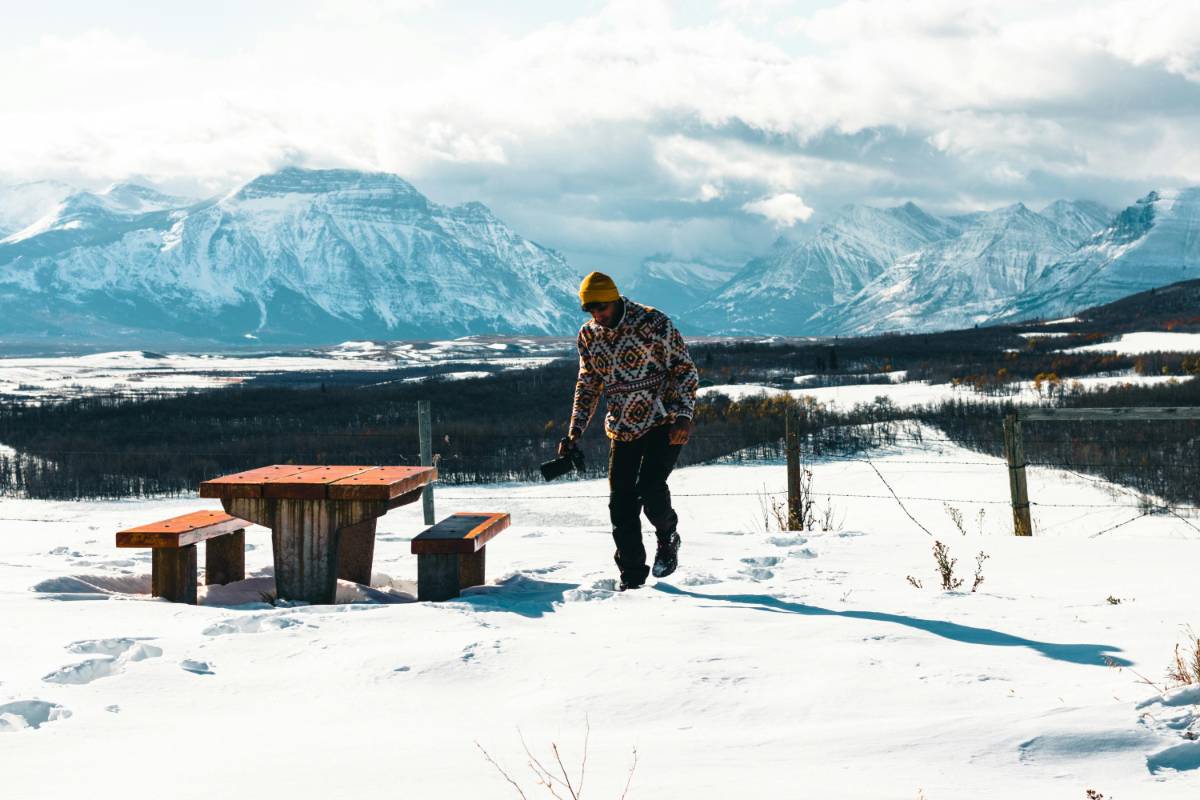
National parks are the epitome of natural beauty, preserving some of the most breathtaking landscapes, wildlife, and ecosystems in the world. Whether you're a seasoned adventurer or a first-time traveler, exploring national parks offers an immersive experience into the wonders of nature. These protected areas are ideal for hiking, wildlife viewing, camping, and connecting with the environment.1169a.jpg***Yellowstone National Park – A Geological WonderlandYellowstone, the first national park in the world, is an iconic destination for nature lovers. Spanning over 2.2 million acres, this park is home to stunning geothermal features, including the famous Old Faithful geyser, hot springs, and fumaroles. The park's vast landscapes also include dramatic canyons, lush forests, and the Yellowstone River.Wildlife enthusiasts will appreciate the park's abundant fauna, including bison, grizzly bears, wolves, and elk. With over 900 miles of hiking trails, visitors can experience the beauty of the park up close while immersing themselves in the serenity of its untouched wilderness.***Grand Canyon National Park – A Majestic View of TimeThe Grand Canyon is one of the most recognized natural wonders in the world. Carved by the Colorado River over millions of years, the canyon’s breathtaking vistas offer a glimpse into Earth’s ancient history. The sheer magnitude and vibrant colors of the canyon walls leave visitors awestruck as they explore its depths.For those seeking adventure, hiking the challenging Bright Angel or South Kaibab Trails provides an opportunity to explore the canyon’s interior. Visitors can also experience the park from the air with a scenic helicopter tour or raft down the Colorado River for a different perspective.***Banff National Park – A Canadian ParadiseNestled in the Canadian Rockies, Banff National Park is known for its pristine wilderness and stunning alpine landscapes. The turquoise waters of Lake Louise and Moraine Lake are two of the park’s most famous attractions, offering picturesque reflections of the surrounding snow-capped peaks.Banff offers exceptional wildlife watching opportunities, with sightings of elk, bighorn sheep, and black bears. In addition to hiking, visitors can indulge in skiing, kayaking, and mountain biking. Banff is a must-see for those seeking a blend of outdoor adventure and tranquil beauty.1169b.jpg***Kruger National Park – South Africa’s Wildlife HavenKruger National Park is one of the largest and most renowned game reserves in Africa, offering an unparalleled safari experience. With an area larger than many European countries, Kruger is home to the Big Five – lions, elephants, rhinos, buffaloes, and leopards – along with a vast array of other species.Visitors can explore the park’s diverse ecosystems through self-guided drives, guided safaris, or walking tours. Kruger also offers luxurious safari lodges and camps, where travelers can enjoy comfort and elegance while witnessing the raw beauty of Africa’s wildlife in their natural habitat.***Zion National Park – A Hiker’s ParadiseZion National Park, located in southern Utah, is famous for its red sandstone cliffs, narrow canyons, and diverse plant and animal life. Hiking is the park's main attraction, with trails like Angels Landing offering stunning views and a thrilling challenge for experienced hikers. The Narrows is another popular trail, where adventurers can walk through the Virgin River between towering canyon walls.For those seeking a more relaxing experience, Zion also offers scenic drives, picnicking spots, and opportunities for birdwatching. The park’s unique geology and desert landscapes create an awe-inspiring backdrop for nature lovers.***Yosemite National Park – Majestic Granite GiantsYosemite National Park, located in California’s Sierra Nevada, is famous for its giant sequoia trees, granite cliffs, and stunning waterfalls. The iconic El Capitan and Half Dome rock formations attract climbers and photographers from around the world.Yosemite is also a prime destination for hikers, with trails that offer spectacular views of the park’s stunning landscapes. Visitors can also enjoy horseback riding, star-gazing, and river rafting. For a more serene experience, explore the park’s numerous meadows and groves for a peaceful retreat into nature.***Conclusion: Nature’s Greatest Adventures AwaitNational parks are more than just scenic spots; they are treasures that preserve the planet’s most stunning landscapes and diverse ecosystems. Whether it’s the geothermal wonders of Yellowstone, the majestic views of the Grand Canyon, or the wildlife-rich Kruger National Park, each destination offers a unique adventure in nature. By visiting these natural wonders, you not only experience the beauty of the earth but also support the preservation of these incredible ecosystems for future generations to enjoy. So pack your bags, hit the trails, and immerse yourself in the greatness of the outdoors!
By Abraham Benjamin · 13 Aug 2025

For those seeking an extraordinary journey filled with comfort, opulence, and memorable experiences, luxury travel destinations offer the perfect escape. These exclusive locations combine natural beauty with world-class amenities, private accommodations, and personalized services, making each stay a unique adventure.1168a.jpg***Paris, France – A Timeless Destination for EleganceKnown as the City of Light, Paris exudes sophistication and romance, making it a top choice for luxury travelers. Lavish hotels such as The Ritz and Le Meurice offer palatial rooms, Michelin-starred restaurants, and views of iconic landmarks like the Eiffel Tower. Shopping at designer boutiques along Champs-Élysées or enjoying private art tours in the Louvre is part of the ultimate Parisian experience.Beyond the main attractions, private Seine River cruises and gourmet wine-tasting sessions provide immersive, exclusive experiences. Paris is a city where elegance and luxury harmoniously blend, creating unforgettable memories.***Maldives – Secluded Paradise with Overwater VillasThe Maldives is a luxury destination celebrated for its crystal-clear waters, white sandy beaches, and private overwater bungalows. Resorts like the Soneva Jani and the Four Seasons Landaa Giraavaru offer secluded villas with direct ocean access, private infinity pools, and personalized butler services.From exploring coral reefs through private snorkeling tours to dining under the stars on secluded islands, the Maldives provides an intimate, exclusive setting. With exceptional spa treatments and underwater restaurants, it is the perfect destination for those seeking relaxation in paradise.***Dubai, UAE – Glamour and Innovation in the DesertDubai stands out as a futuristic city of luxury, offering everything from sky-high hotels to extravagant shopping experiences. The Burj Al Arab, with its sail-shaped architecture and seven-star amenities, is a symbol of opulence. Travelers can enjoy private helicopter tours, exclusive desert safaris, and luxurious yacht cruises along the coast.Dubai’s vibrant culinary scene includes fine dining in world-renowned restaurants and unique experiences like dining under the sea at Ossiano. With shopping festivals, private golf courses, and indoor skiing, Dubai redefines luxury travel.1168b.jpg***Santorini, Greece – Sunset Views in Aegean BlissSantorini captivates luxury travelers with its iconic whitewashed buildings, deep blue domes, and spectacular sunset views. High-end accommodations like Canaves Oia Suites provide cliffside rooms with infinity pools overlooking the caldera. Private yacht tours around the islands and exclusive wine tours in the famous vineyards make Santorini an idyllic destination.Whether relaxing in a private villa or dining at upscale seafood restaurants, the unique blend of luxury and serene surroundings makes Santorini a magical escape for discerning travelers.***Kyoto, Japan – A Journey into Traditional LuxuryKyoto combines the elegance of Japanese tradition with modern luxury. The city’s high-end ryokans (traditional inns) such as Hoshinoya Kyoto offer private rooms with hot spring baths, Kaiseki-style meals, and scenic views of lush Japanese gardens. Visitors can enjoy tea ceremonies, guided tours of ancient temples, and private geisha performances.For a deeper cultural experience, private cooking classes, Zen meditation sessions, and curated shopping tours of artisanal crafts provide a blend of elegance and authenticity. Kyoto is a tranquil luxury destination for those who value tradition and beauty.***New York City, USA – The City That Never Sleeps in StyleNew York City is a luxury playground offering premier hotels, fine dining, and unparalleled entertainment. Hotels like The Plaza and The St. Regis provide timeless elegance with exceptional service. Private helicopter tours over Manhattan, exclusive Broadway show tickets, and shopping at Fifth Avenue’s designer stores are just a few indulgent experiences available.In addition to art galleries and renowned museums, visitors can dine at Michelin-starred restaurants and explore the city’s vibrant nightlife. New York combines the excitement of a bustling city with world-class luxury amenities, making it an unforgettable destination.***Conclusion: Elevate Your Travel with Luxury DestinationsLuxury travel destinations redefine the meaning of a holiday by offering a balance of adventure, relaxation, and exclusivity. Whether it’s the secluded beaches of the Maldives, the cultural elegance of Kyoto, or the glamour of Dubai, these destinations provide a perfect escape for those who seek the finest experiences. With carefully curated services and attention to detail, luxury travel opens up a world of unforgettable journeys that make every moment extraordinary.
By Christopher David Wilson · 12 Aug 2025

Traveling abroad opens up a world of exciting experiences, from discovering new cultures to exploring breathtaking landscapes. However, safety is an essential part of ensuring your journey is enjoyable and worry-free. With the right precautions, you can safeguard yourself against potential risks and make the most of your trip.1167a.jpg***Research Your Destination ThoroughlyBefore you travel, spend time learning about your destination. This includes understanding local customs, laws, and cultural norms to ensure you don’t unintentionally offend anyone or find yourself in an awkward situation. Familiarize yourself with the area’s current safety situation, including political stability, common scams, and areas best avoided.Use reliable sources such as government travel advisories, reputable travel blogs, and official tourism websites. Knowledge about your destination will empower you to navigate confidently, minimizing surprises along the way.***Secure Your Documents and ValuablesMake copies of important documents like your passport, visa, insurance information, and travel itinerary, and store them separately from the originals. Additionally, consider scanning these documents and saving them securely online for easy access.Use a money belt or a neck wallet to keep cash and valuable items safe. When heading out, carry only the essentials and leave the rest locked in a hotel safe or secure location. Avoid displaying expensive items, as this can make you a target for theft.***Stay Connected: Communication and Emergency ContactsMaintaining regular contact with friends or family members can be a vital safety net. Inform them of your itinerary and check in periodically. Have local emergency contact numbers saved on your phone, including police, medical services, and your country’s embassy or consulate.Consider investing in an international phone plan or a local SIM card to ensure you’re reachable and can access maps and translation apps as needed. In case of an emergency, having communication readily available can make a significant difference.***Blend In to Avoid Drawing Unwanted AttentionIn some countries, tourists can stand out as easy targets for scams or theft. To reduce this risk, try to blend in with locals by dressing modestly and appropriately for the culture. Avoid wearing clothing or accessories that may signal you are a foreigner or draw attention to your wealth.Respect the local etiquette, and observe how people behave in public places. Blending in can enhance your travel experience by helping you gain acceptance from locals while also increasing your personal safety.1167b.jpg***Be Cautious with Food and WaterConsuming food or water from unfamiliar sources can lead to illness, particularly in regions where sanitation practices may differ. Stick to bottled water or water that has been boiled, especially if you’re unsure about the water quality. Similarly, be cautious with ice cubes as they may be made from tap water.When trying local food, opt for well-cooked dishes and popular street food stalls with high turnover, which often indicates fresher food. If you have dietary restrictions or allergies, learning some phrases in the local language or using a translation app can help you communicate your needs effectively.***Stay Aware of Your SurroundingsSituational awareness is crucial while traveling abroad. Pay attention to people around you, especially in crowded areas like markets, tourist sites, or public transportation. Pickpocketing is a common issue in crowded spots, so keep your belongings close and secure.Trust your instincts and be cautious if someone seems overly friendly or tries to distract you. Scammers often use these tactics to target tourists. Staying alert can help you avoid potential problems and enjoy a safer experience.***Protect Yourself with Travel InsuranceTravel insurance is an essential investment that provides coverage for unforeseen events such as medical emergencies, trip cancellations, or lost belongings. Before purchasing, review the policy to understand what it covers and ensure it’s suited to your travel needs.Having travel insurance can offer peace of mind and protect you from financial losses if an unexpected situation arises. Be sure to keep a copy of your insurance policy and contact information on hand.***Trust Your Instincts and Stay VigilantIntuition is one of the best tools you have while traveling. If a situation or person feels off, trust your instincts and remove yourself from the situation. Don’t be afraid to say no or walk away if someone pressures you into doing something that makes you uncomfortable.Being vigilant and cautious doesn’t mean you can’t have fun. It’s about balancing awareness with enjoyment to ensure a rewarding and safe travel experience.***Conclusion: Enjoy Your Journey with Peace of MindTraveling abroad can be one of the most enriching experiences in life. By prioritizing safety and staying prepared, you allow yourself to fully embrace the adventure while minimizing risks. With a little caution and preparation, your journey will be smoother, and you’ll come back with memories to last a lifetime.
By Robert Anthony Brown · 11 Aug 2025
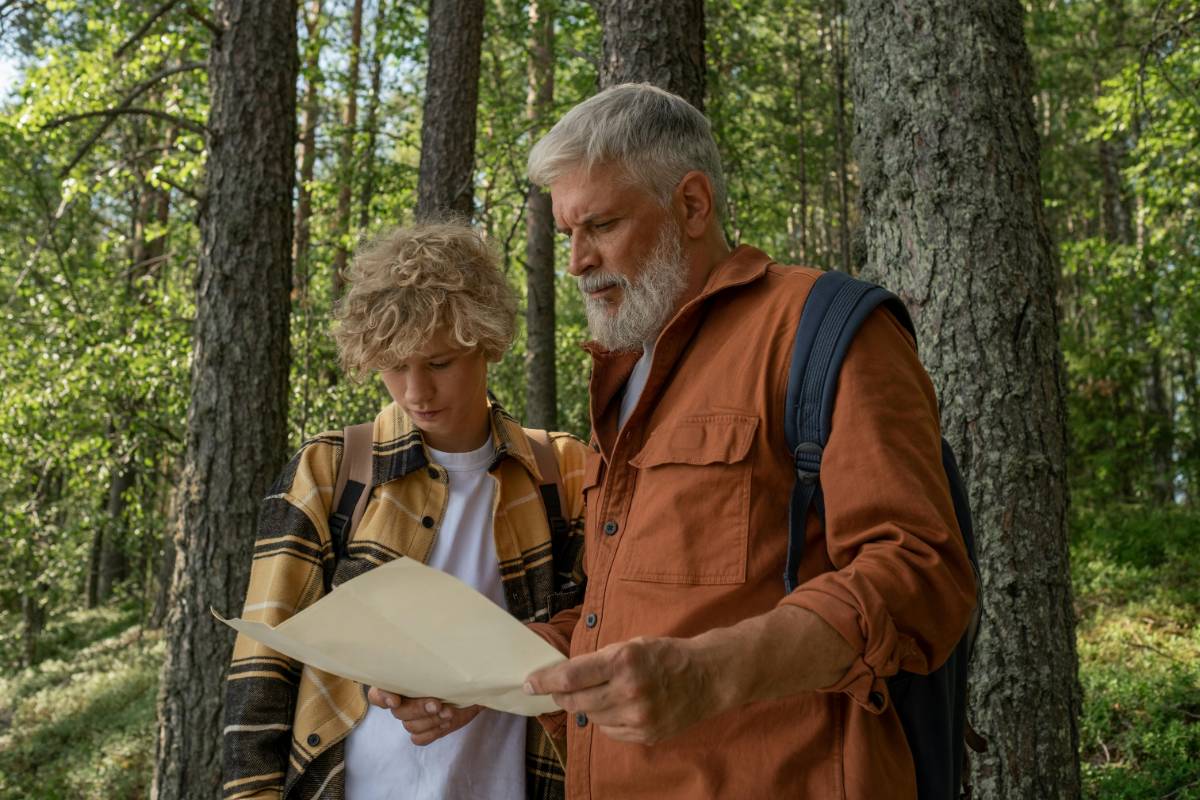
Embarking on a backpacking adventure offers an unparalleled way to explore new places, experience diverse cultures, and connect with nature. For those new to the experience, planning and preparing for a backpacking trip can seem daunting, but with the right strategies and knowledge, you can set yourself up for a safe and memorable journey.1166a.jpg***Choosing the Right Gear: Essentials for Every BackpackerSelecting the appropriate gear is one of the most crucial aspects of preparing for a successful backpacking trip. This includes choosing a reliable backpack that fits well and distributes weight evenly, as well as packing weather-appropriate clothing and durable footwear. Key essentials also include a high-quality sleeping bag, a lightweight tent, and a compact cooking setup if you plan to camp overnight.Additionally, it's important to have a first-aid kit, a multi-tool, and navigation tools such as a map, compass, or GPS. Consider the weight and bulk of each item carefully, as overpacking can lead to physical strain. Opt for multipurpose gear and prioritize lightweight options to keep your load manageable.***Planning Your Route: Understanding Terrain and WeatherPlanning your route in advance is critical for ensuring safety and enjoyment on your backpacking trip. Begin by researching the area you wish to explore, paying close attention to the terrain, elevation changes, and potential hazards. Choose a trail that matches your fitness level and experience, and be prepared for unexpected changes in weather, especially if you’re hiking in mountainous or coastal areas.When planning, consider factors such as the length of the trail, availability of water sources, and designated camping areas. Online trail maps and apps can offer detailed insights into popular backpacking routes, allowing you to gauge the difficulty level and determine if the trail aligns with your comfort zone.1166b.jpg***Packing Light: Streamlining Your Supplies for EfficiencyEfficient packing is an art form in backpacking, and it starts with minimizing non-essential items. Stick to the basics, and aim to carry only what you’ll realistically need. This means packing versatile clothing that can be layered for warmth, and investing in compact, lightweight equipment.Organize your backpack strategically, with frequently used items such as snacks, water, and a map placed in easily accessible compartments. Heavier items should be packed close to your back to maintain stability, while lighter items can be placed further away. This method of packing reduces strain on your body and makes for a more comfortable hiking experience.***Staying Safe on the Trail: Precautions and AwarenessSafety is paramount during any backpacking adventure. Before heading out, ensure you’re familiar with basic survival skills such as fire-building, navigation, and water purification. If you're hiking in bear country, bring bear spray and learn the proper protocols to prevent unwanted wildlife encounters.Always inform someone of your route and expected return time. Carry a whistle and a basic first-aid kit, and know how to respond in case of injury. Staying aware of your surroundings and respecting natural habitats will contribute to a safer and more enjoyable experience.***Navigating Water and Food Supplies: Essentials for Sustained EnergyWater and food are crucial for maintaining energy levels, especially on longer hikes. Plan to carry enough water for each day, and know where you can refill along the trail. In areas with natural water sources, bring a filtration device or purification tablets to ensure you have access to clean drinking water.For food, pack nutrient-dense options like trail mix, dried fruit, jerky, and energy bars. If you're on a multi-day hike, consider easy-to-prepare dehydrated meals. Proper planning of meals and hydration will help sustain your energy and keep you feeling strong throughout your journey.***Practicing Leave No Trace PrinciplesRespect for the environment is a core principle of backpacking. Practicing Leave No Trace principles means minimizing your impact on nature. This includes packing out all trash, staying on designated trails, and camping only in permitted areas. By following these practices, you help preserve natural spaces for future visitors and contribute to a cleaner, healthier environment.***Conclusion: Embracing the Journey and Building ConfidenceBackpacking offers a unique opportunity to challenge yourself, build resilience, and experience the beauty of the outdoors. While it may seem intimidating initially, proper planning, packing, and preparation can turn a first-time backpacking trip into an unforgettable adventure. As you gain experience and confidence on the trail, you’ll discover that the rewards of backpacking far outweigh the initial challenges.,
By Stefen · 10 Aug 2025

If you’re someone who eagerly awaits the first snowflake of winter, you know that the season brings a unique allure to certain places around the world. From picturesque mountains blanketed in snow to cozy towns offering warm beverages and winter festivities, there are destinations perfect for every snow lover. Here’s a guide to the best winter wonderlands, offering everything from thrilling slopes to serene landscapes that’ll make you want to book a trip immediately.1165a.jpg***St. Moritz, Switzerland: The Epitome of Alpine LuxuryNestled in the Swiss Alps, St. Moritz is synonymous with winter luxury and top-tier ski resorts. The town offers stunning views, pristine slopes, and top-notch facilities for winter sports enthusiasts. Beyond skiing, visitors can enjoy activities like snowboarding, ice skating, and even winter polo.St. Moritz is famous not only for its picturesque landscape but also for its culinary scene and luxury shopping. From the chic boutiques in town to gourmet restaurants serving Swiss and international delicacies, every part of your stay will feel indulgent. If you’re looking to experience the ultimate winter luxury, St. Moritz is the destination for you.***Banff, Canada: A Natural Winter WonderlandLocated in the heart of the Canadian Rockies, Banff transforms into a magical landscape during winter. Known for its crystal-clear lakes, towering mountains, and abundant wildlife, Banff offers a serene environment perfect for those seeking both adventure and tranquility. The area is popular for skiing, snowboarding, and snowshoeing, and the majestic Lake Louise looks stunning surrounded by snow-capped peaks.Beyond outdoor activities, Banff’s charming town center offers cozy cafes, local shops, and a welcoming atmosphere. For a more immersive experience, stay in one of the historic lodges, where you can enjoy mountain views and roaring fireplaces. Banff is a destination that captivates with its natural beauty and laid-back charm.***Niseko, Japan: Powder Paradise for SkiersNiseko on Japan’s northern island of Hokkaido is celebrated for its powder snow. With consistently deep and soft snow, it’s a dream destination for avid skiers and snowboarders. The area has several resorts that cater to all levels, and each one offers access to the renowned “Japow” experience.In addition to winter sports, Niseko has natural hot springs, known as onsens, where you can relax after a day on the slopes. The unique combination of excellent skiing conditions and cultural experiences makes Niseko a memorable winter destination for those looking to experience snow in a new and exciting way.***Chamonix, France: A Classic European Snow AdventureChamonix, located at the foot of Mont Blanc, is one of the most famous ski destinations in Europe. Known for its breathtaking views, challenging slopes, and lively après-ski scene, Chamonix draws snow lovers from around the world. The town itself is full of history and charm, offering a variety of restaurants, bars, and shops.Whether you’re a beginner or an experienced skier, Chamonix offers slopes to suit your level. And if you’re not into skiing, there are options for snowshoeing, ice climbing, and even paragliding over the snow-covered mountains. Chamonix is ideal for those seeking both adventure and a taste of classic European winter culture.1165b.jpg***Aspen, USA: The Glamorous Side of WinterAspen is not just a ski resort; it’s a winter lifestyle destination. Known for its luxurious accommodations, fine dining, and high-end shops, Aspen attracts celebrities and snow enthusiasts alike. With four distinct ski areas, Aspen offers something for every level, from beginners to advanced skiers.Off the slopes, Aspen’s vibrant cultural scene includes art galleries, live music events, and the renowned Aspen Film Festival. For those seeking a mix of glamour, culture, and outdoor adventure, Aspen is an iconic winter destination.1164d.jpg***Reykjavik, Iceland: A Winter Wonderland Like No OtherReykjavik may not be known for skiing, but it offers a winter experience that’s nothing short of magical. Iceland’s winter landscape is unlike anywhere else, with volcanic terrain, glaciers, and waterfalls. One of the highlights of winter in Reykjavik is the chance to see the Northern Lights, a bucket-list experience for many travelers.Reykjavik also serves as a gateway to the country’s natural wonders, such as the Blue Lagoon, where you can soak in geothermal waters surrounded by snow. For a unique winter escape filled with awe-inspiring scenery, Reykjavik is an unforgettable destination.***Tromsø, Norway: Arctic Beauty and Polar NightsTromsø, located above the Arctic Circle, is an extraordinary winter destination. Known for its polar nights and the Northern Lights, Tromsø offers a winter experience like no other. During the polar night, the sun doesn’t rise for several weeks, creating an otherworldly atmosphere.In Tromsø, you can enjoy dog sledding, ice fishing, and Northern Lights tours. The town itself is charming and full of cafes where you can warm up after a day of exploring. Tromsø’s Arctic beauty and unique winter traditions make it a must-visit for snow lovers.***Whistler, Canada: Winter Fun on a Grand ScaleWhistler, located in British Columbia, is one of North America’s largest and most popular ski resorts. With vast terrain, modern amenities, and a lively village, Whistler offers a complete winter experience. The resort has a variety of slopes, catering to all skill levels, and also features snow parks for freestyle skiers and snowboarders.Beyond the slopes, Whistler Village is packed with restaurants, bars, and shops, creating a vibrant atmosphere. Whether you’re there for skiing or simply to soak in the winter ambiance, Whistler delivers a memorable snow-filled experience.***Lake Tahoe, USA: Scenic Beauty and Family-Friendly FunLake Tahoe, straddling the border between California and Nevada, is a stunning winter destination known for its scenic beauty and excellent ski resorts. The area has a mix of challenging slopes for experienced skiers and gentle slopes for beginners, making it perfect for family trips.In addition to skiing and snowboarding, Lake Tahoe offers activities like snowmobiling, ice skating, and winter festivals. The combination of breathtaking lake views and a variety of activities makes Lake Tahoe a top choice for snow lovers looking to experience the best of winter.***Conclusion: Embrace the Snow and Explore Winter’s Best DestinationsFrom the Alps to the Arctic Circle, the world is full of destinations that transform into breathtaking winter wonderlands. Whether you’re a ski enthusiast, a cultural explorer, or simply someone who loves the beauty of snow-covered landscapes, these destinations offer unforgettable experiences. Choose one, or explore them all, and make the most of this winter season with a trip that celebrates the magic of snow.
By John Michael Smith · 09 Aug 2025

Frequent flyer miles are an excellent way to travel more and spend less, but many travelers don’t fully realize their potential. With the right approach, you can maximize your miles, unlocking free flights, upgrades, and other perks. Here’s a guide to making the most of your frequent flyer miles and ensuring that each journey brings you closer to your next reward.1164a.jpg***Choose a Frequent Flyer Program That Matches Your Travel HabitsStart by selecting a frequent flyer program that aligns with your travel patterns. Consider the airlines you frequently fly with, as well as their partners in global alliances. Major alliances like Star Alliance, SkyTeam, and Oneworld allow you to earn miles across multiple airlines, making it easier to accumulate points even if you aren’t loyal to a single carrier.Some programs also offer additional perks like lounge access, priority boarding, or free checked bags, so review the benefits and decide which aligns with your needs. By selecting a program that matches your travel habits, you’ll find it easier to rack up miles and enjoy perks on flights you’re already planning to take.***Sign Up for a Co-Branded Credit CardOne of the fastest ways to earn miles is by signing up for a co-branded airline credit card. These cards typically offer sign-up bonuses and allow you to earn miles on everyday purchases. Look for a card that fits your spending habits, and pay attention to annual fees and interest rates.Some cards offer additional benefits, such as priority boarding, free checked bags, or companion tickets, making them an excellent choice for frequent travelers. By using your airline credit card for regular expenses, you’ll accumulate miles faster, helping you reach reward thresholds more quickly.***Take Advantage of Airline Promotions and Bonus OffersAirlines often run promotions where you can earn bonus miles on flights or through special partnerships. Sign up for your frequent flyer program’s newsletter or follow the airline on social media to stay informed about current offers. You might earn extra miles for flying certain routes, staying at partner hotels, or shopping through the airline’s online mall.These promotions provide a quick way to boost your miles balance without additional spending. Just be sure to read the terms and conditions carefully, as some promotions may have limited availability or be restricted to specific dates.***Use Shopping Portals and Dining ProgramsMany frequent flyer programs offer shopping portals where you can earn miles for purchases with popular retailers. Similarly, dining programs let you earn miles when you eat at participating restaurants. By making purchases you were already planning to make, you can accumulate miles with minimal effort.With these programs, be mindful of any restrictions and ensure your credit card is linked to your dining profile. Shopping and dining through affiliated portals is an effortless way to rack up miles, often with minimal extra cost.1164b.jpg***Book Flights Strategically to Maximize Mile EarningThe number of miles you earn depends on various factors, including the fare class and distance flown. In many cases, booking directly with the airline yields more miles than booking through third-party sites. Additionally, consider fare classes that earn bonus miles if you’re planning a long-haul flight.Some programs also offer elite status bonuses, which give frequent flyers a higher earning rate on miles. By understanding your program’s rules and fare classes, you can maximize the miles you earn on every flight and reach your travel goals faster.***Redeem Miles Wisely for Maximum ValueNot all redemptions offer equal value, so it’s essential to understand which options provide the best returns. Generally, using miles for flights—particularly long-haul and international—offers the most value. Hotel stays, rental cars, and other redemptions may yield a lower value per mile.Consider using miles for first or business class upgrades when flying long distances. These redemptions often provide higher value compared to economy flights. By being selective with your redemptions, you’ll get the best possible return on your miles.***Monitor Your Miles and Plan for Expiration DatesMany frequent flyer programs have expiration dates for miles if your account remains inactive. Keep an eye on your balance and expiration dates, and try to make small purchases or transactions to keep your account active.Some programs offer lifetime status or extend expiration dates for elite members, so check if you qualify for these benefits. Keeping your account active ensures your miles don’t go to waste and allows you to save them for your dream trip.***Consider Mileage Runs for Extra MilesA mileage run is a trip taken primarily to earn miles. While this may sound extreme, it can be beneficial if you’re close to reaching elite status or a reward threshold. Plan your mileage run carefully, aiming for low-cost flights with high mileage yields.Mileage runs can help you achieve elite status, unlocking additional perks like priority boarding, lounge access, and increased mile-earning potential. Although this strategy isn’t for everyone, it can be a worthwhile option if you’re committed to maximizing your miles.***Stay Flexible and Book When Fares DropBeing flexible with travel dates and destinations can help you make the most of your miles. Watch for fare drops and consider booking trips during off-peak seasons. Many airlines also offer award seat sales, where you can book flights at a reduced mileage rate.By planning trips when mileage requirements are lower, you can stretch your miles further, allowing you to travel more frequently. Flexibility is key to maximizing the value of your frequent flyer program.***Conclusion: Unlock More Travel OpportunitiesMaximizing your frequent flyer miles requires strategy, planning, and some flexibility, but the rewards are worth it. By choosing the right frequent flyer program, using credit cards, and taking advantage of promotions, you can accumulate miles quickly. Being mindful of redemption values, avoiding expiration, and staying flexible with bookings will help you get the most from your miles, ultimately opening up more travel opportunities for you.
By Abraham Benjamin · 08 Aug 2025
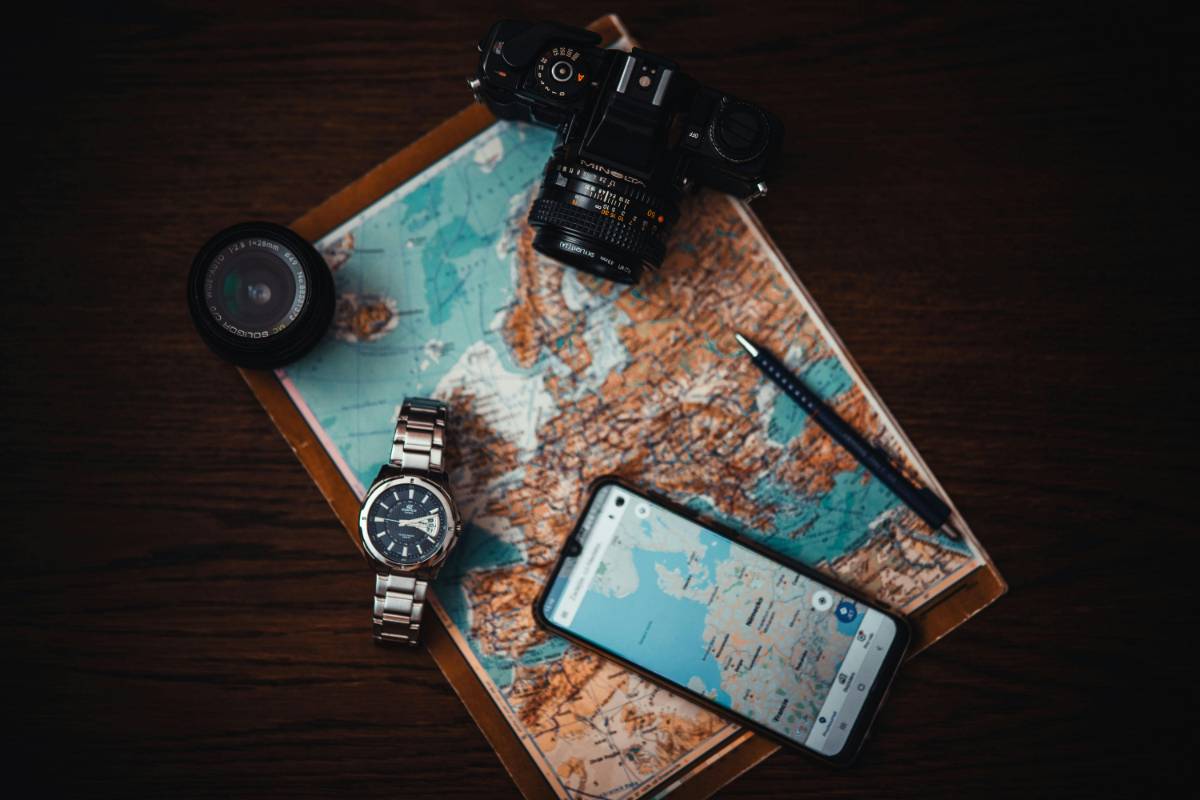
Traveling has become more convenient than ever, thanks to the power of technology. Whether it’s planning your itinerary, managing expenses, or staying informed about local weather, a wide range of travel apps can help streamline your journey. Here’s a list of must-have travel apps to make your trip smoother and more enjoyable.1163a.jpg***Google Maps: Navigation Made EasyGoogle Maps remains one of the most popular travel apps for navigation and exploration. With real-time traffic updates, offline maps, and street views, it helps you find the best routes, discover nearby attractions, and even check out reviews of restaurants and hotels. Its offline map feature is particularly useful in areas with poor internet connectivity.Another advantage of Google Maps is its public transit guidance, which provides detailed information on bus, train, and subway routes in various cities worldwide. By downloading maps of your destination beforehand, you can ensure you’re prepared for any travel situation.***Hopper: For Finding the Best Flight DealsHopper is a fantastic app for travelers seeking to save on flights. By analyzing historical price data, Hopper predicts the best time to book flights, notifying users when ticket prices drop. This feature is perfect for travelers on a budget, as it ensures you’re getting the best possible deal for your journey.In addition to flights, Hopper also provides insights on hotel prices and offers helpful travel tips based on destination trends. This app makes planning affordable travel easy, helping you secure the lowest prices on accommodations and flights.***PackPoint: Packing Made SimplePackPoint is an intuitive packing app that generates custom packing lists based on your travel details, such as destination, travel dates, and activities. It also takes into account the weather forecast at your destination, ensuring you pack appropriately for the conditions.With PackPoint, you can create personalized packing lists that you can share with fellow travelers. This app is especially useful for those who tend to overpack or forget essentials, as it helps streamline the packing process and keeps you organized.***XE Currency: Currency Conversion on the GoXE Currency is an essential app for international travelers needing quick and accurate currency conversions. The app provides real-time exchange rates and allows users to save rates for offline use. This feature is valuable in countries where internet access may be limited, ensuring you always have up-to-date information.In addition to conversion, XE Currency offers a currency rate alert feature, enabling users to set specific rates they’re interested in. This way, you’ll know when it’s a good time to exchange money for your trip.1163b.jpg***TripIt: All Your Travel Plans in One PlaceTripIt is a fantastic organizational tool that consolidates all your travel details into one itinerary. By forwarding your flight, hotel, and car rental confirmations to TripIt, the app creates a master itinerary you can access at any time. With offline access, TripIt ensures that even in areas with no internet, your travel plans are at your fingertips.For travelers with multiple bookings and destinations, TripIt’s calendar sync feature can also help keep track of each leg of your journey. This app is invaluable for staying organized and stress-free throughout your trip.***Google Translate: Language Barrier BreakerGoogle Translate is an indispensable tool for overcoming language barriers when traveling internationally. With support for dozens of languages, Google Translate provides text, voice, and photo translation. The app’s offline mode allows you to download language packs, so you’re never left struggling to communicate.One of Google Translate’s best features is its camera mode, which enables instant translation by pointing your camera at text. This is incredibly useful for reading signs, menus, and other written materials in foreign languages.***LoungeBuddy: Relaxation at the AirportLoungeBuddy is a lifesaver for travelers facing long layovers or delays. The app provides information on airport lounges worldwide, allowing users to book passes or check access options. LoungeBuddy’s search feature helps you locate lounges based on your departure or arrival airport, and it even includes reviews, photos, and amenities available in each lounge.With LoungeBuddy, you can relax in style, even if you don’t have a premium ticket or airline membership. It’s a must-have for travelers who want a comfortable experience at the airport without the usual crowds.***WhatsApp: Stay Connected with EaseWhatsApp is more than just a messaging app; it’s a vital communication tool for travelers. With end-to-end encryption, free international messaging, and support for voice and video calls, WhatsApp keeps you connected with friends and family wherever you are.WhatsApp’s group chat feature also allows you to communicate easily with fellow travelers. Its location-sharing function is particularly useful for meeting up in unfamiliar areas, and it works even in areas with limited internet service.***Conclusion: Travel Smart with the Right AppsTravel apps can transform your journey, making it more enjoyable, efficient, and stress-free. From planning and packing to navigating foreign cities and finding the best deals, these top travel apps cater to every need of a modern traveler. Download these essential apps before your next trip to enhance your travel experience and make the most of your adventure.
By Christopher David Wilson · 07 Aug 2025